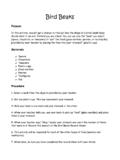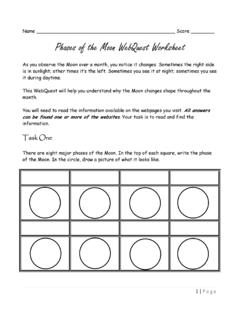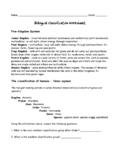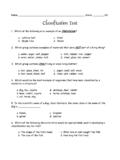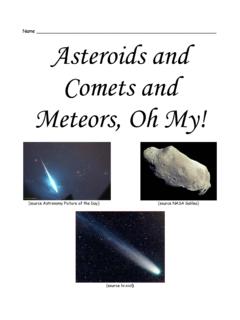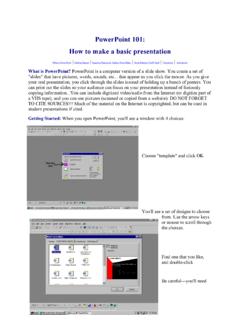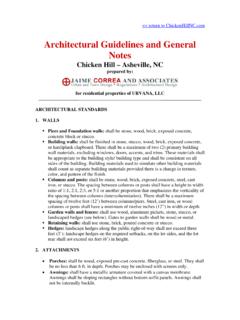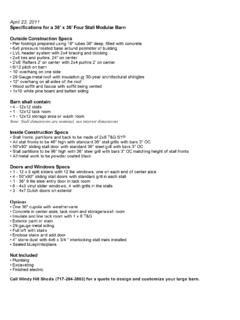Transcription of Name
1 Name _____ 1 Overview of Density Worksheet Key formulas/Concepts: Density Density = Mass divided by Volume (D = M/V). The mass of an object is 25 grams. The volume of an object is 5 cm3. D = 25g/5cm3 = 5 g/cm3. Volume of a rectangular shaped object/cube Length x Width x Height (L x W x H). Example A cube has a length of 3 cm. (Note a cube has six equal sides). V = 3 x 3 x 3 = 27 cm3. A piece of wood has a length of 10 cm, width of 18 cm, and height of 3 cm. V = 10 x 18 x 3 = 540 cm3. Volume of an irregularly shaped object Use a graduated cylinder filled with a fluid. Record the beginning amount of fluid (in mL milliliters). Drop the object into the graduated cylinder. Record the level of the fluid with the object (in mL). To determine the volume: Level of fluid with object beginning amount of fluid.
2 Example a graduated cylinder is filled to the 30mL mark with water. You drop in a rock. The water level rises to 48mL. V = 48mL 30mL = 18mL. Problems (Always Show Your Work and units g, mL, cm3, g/cm3, g/mL): 1. M = 35g, V = 17cm3 2. M = 40g, V = 31cm3 3. Your have a box that has a volume of 412 cm3 and weighs 42g. What is its density? 4. Calculate the density of a 500 g rectangular block with the following dimensions: length=8 cm, width=6 cm, height=5 cm. 2 5. One side of a cube is 6 cm long. Its weight is 220 g. What is the density of the cube? 6. You are given a cube with a length of cm, a width of cm, and a height of cm. You place it on a scale, and its mass is 295 g. Calculate the density. 7. You have a piece of balsa wood that is 45 cm long, 8 cm high, and 4 cm wide. It weighs 500 g.
3 What is its density? 8. An irregular object with a mass of 118 g displaces 25mL of water when placed in a graduated cylinder. Calculate the density of the object. 9. A bead weighs 15 g. You place it in a graduated cylinder that has 20mL of water in it. After placing the bead in the cylinder, the water level is now at 30mL. What is its density? 10. A screw weighs 10 grams. After dropping it in a graduated cylinder, you find its volume is 7mL. What is its density? 3 11. Drop a toy car in a graduated cylinder with 15mL of water. You look at the level after the car is in the cylinder and see that it is now 32mL. The car weighs 127 g. What is its density? 12 14. Will it float, neither float nor sink, or sink? Density of Object Density of Fluid Float, sink, neither 17 g/cm3 g/cm3 1 g/cm3 3 g/cm3 g/cm3 g/cm3 15 17 Will it float, neither float nor sink, or sink?
4 Density of Object Density of Fluid Float, sink, neither 4 g/cm3 4 g/cm3 g/cm3 g/cm3 g/cm3 g/cm3 18. A sample has a mass of and a volume of , what is its density? 19. A piece of metal has a mass of and has a volume of What is its density? 4 20. If a sample has a volume of and a mass of , its density would 21. Godzilla was running wild in Brigham City but was finally captured. The Police Department needs you to tell them his density (the FBI must know this). You have a huge vat of water filled to the 1,000 L level. You drop the kicking and roaring Godzilla into the vat. It now reads 2,716 L. At the bottom of your vat is a scale. You empty the water and weigh Godzilla His mass is 8,000kg. What is his density? 22. Water has a density of 1 g/cm3.
5 You drop an object into the water that has a mass of .86 g/cm3. What will happen to the object? 23. Mercury has a density of g/cm3. You drop an object into the mercury that has a density of g/cm3. What will happen to the object? 24. You drop a rock in water and the rock sinks. What can you infer from this? 5 25. What is the density of a board whose dimensions are cm x cm x 199 cm and whose mass is g? 26. Calculate the mass of a liquid with a density of g/mL and a volume of 25mL. (Use the formula Mass = Density x Volume) 27. Calculate the density of a 500 g rectangular block with the following dimensions: length=8 cm, width=6 cm, height=5 cm. 28. An irregular object with a mass of 18 g displaces of water when placed in a large cylinder. Calculate the density of the object. 29. A graduated cylinder has a mass of 80 g when empty.
6 When 20 mL of water is added, the graduated cylinder has a mass of 100 g. If a stone is added to the graduated cylinder, the water level rises to 45 mL and the total mass is now 156 g. What is the density of the stone? Density Cubed Materials Six metal cubes Triple-beam balance 6 Calculator You have six cubes. Your assignment is to determine the mass of each cube. Using that information, you need to identify what metal the cube is made of (densities are approximate). Metal Density Metal Density Aluminum g/cm3 Iron g/cm3 Brass g/cm3 Lead g/cm3 Copper g/cm3 Zinc g/cm3 Your task is to calculate the density for each block and identify which metal it is. Block # Mass (grams) Volume (cm3) Density (g/cm3) (D = M/V) Metal 1 2 3 4 5 6 What a Mass!
7 Materials Triple-beam scales Cylinder set (5) Calculator 7 Ruler Procedures 1. Measure each cylinder and record its length on the table on the back. 2. Weigh each cylinder and record its mass on the table on the back. 3. Calculate the volume using the following formula: V = r2h ( is found on the EXP key on the calculator, r2 is .6 cm, and h is the length of the cylinder, in centimeters). 3. Determine the density of each cylinder. 4. Once you know the density, identify what material each cylinder is made of. 5. In your science journal, make a chart like the one below and complete it. Material Table Material Density - (g/cm3) Material Density - (g/cm3) Aluminum g/cm3 PVC g/cm3 Copper g/cm3 Nylon g/cm3 Polyethylene g/cm3 Data Chart Cylinder (length in cm) Mass (g) Volume (cm3) Density (g/cm3) 8 Which Cylinder is Made of Which Material?
8 Cylinder (length) Material Curls Materials Pencil Paper cup Container Warm water 2 blue ice cubes Procedure 1. Use the point of a pencil to punch four small holes near the bottom of the paper cup. The holes should be spaced evenly around the cup. 2. Fill the container with warm water. (You need enough water so you can place the bottom of the cup in the water. You also need enough room for the water that goes into the cup.) 3. Set the paper cup back in the container and place the ice cubes in the cup. 9 4. Wait 1 minute. 5. Add three drops of food coloring to the water in the paper cup (avoid the ice cubes). 6. In your science journal, write the date and experiment title. In your science journal, describe what happens when you put the food coloring in the paper cup. 7. Explain how density is responsible for your results.
9 _____ _____ _____ Changing the Density of a Liquid Question: Can the density of a liquid be changed? Materials Two cups Slice of carrot Salt Teaspoon Procedure 1. Half-fill a plastic cup with room-temperature water. 2. Place a slice of carrot in the cup. It should sink because it is denser than water. 3. Add about 1 teaspoon of salt and stir with a spoon until as much salt dissolves as possible. 4. Continue adding salt and stirring until the carrot floats to the top. 5. Very carefully, add fresh water to the top of the salt water until the carrot begins to sink. 10 6. If the carrot sinks to the bottom, add small amounts of salt and fresh water as needed to cause it to hover. 7. Empty the water and rinse out the cups, throw away the carrot, dry the cups and tray, put all supplies back on the table. 8. Draw a carrot slice in each of the cups below to reflect your observations.
10 Fresh Water Salt Water Is the carrot slice more dense or Is the carrot slice more dense or less dense than the water? less dense than the water? Comparing the Density of an Object to the Density of Water Question: How can you predict whether an object will sink or float in water? Materials Ruler Tape Marker Two candles in metal containers Clay 11 Clear plastic cup filled with room temperature water Procedure 1. Tape the pencil down. Roll two small pieces of tape so that the stick side is out. Stick each piece of tape to the opposite ends of the ruler. 2. Remove both candles from their metal containers. Place an empty metal container on each piece of tape. Be sure that the edge of the metal container lines up with the end of the ruler. 3. Lay the ruler on the pencil so that it is as balanced as possible.

